DIY Kombucha
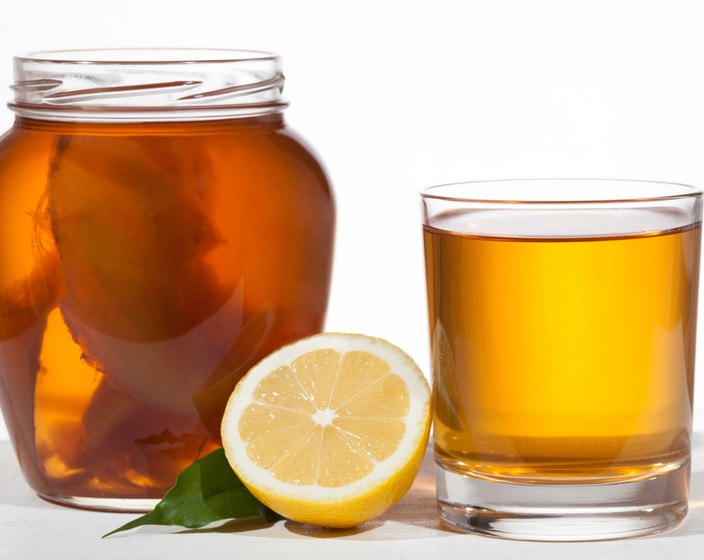
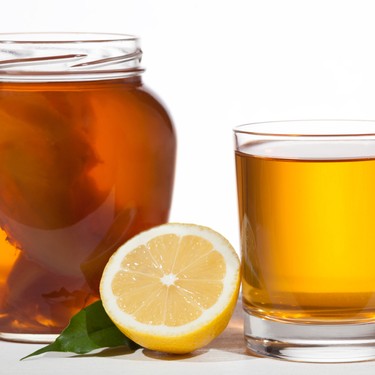


Kombucha may be a "new hot item" in health stores and instagram, but it's much older- as in 221 BC older. The name comes from from Dr. Kombu who took the beverage from China to Japan. “Cha” means “tea” in Japanese, so the word kombucha was born and lives on until today.
First things first, you’re going to need a scoby (acronym for Symbiotic Culture Of Bacteria and Yeast). This powerhouse of good bacteria and yeast is what’s going to take sugary tea and convert it into fizzy kombucha.
You can grow your own SCOBY, however, let's keep things simple and use one that's already alive and kicking.
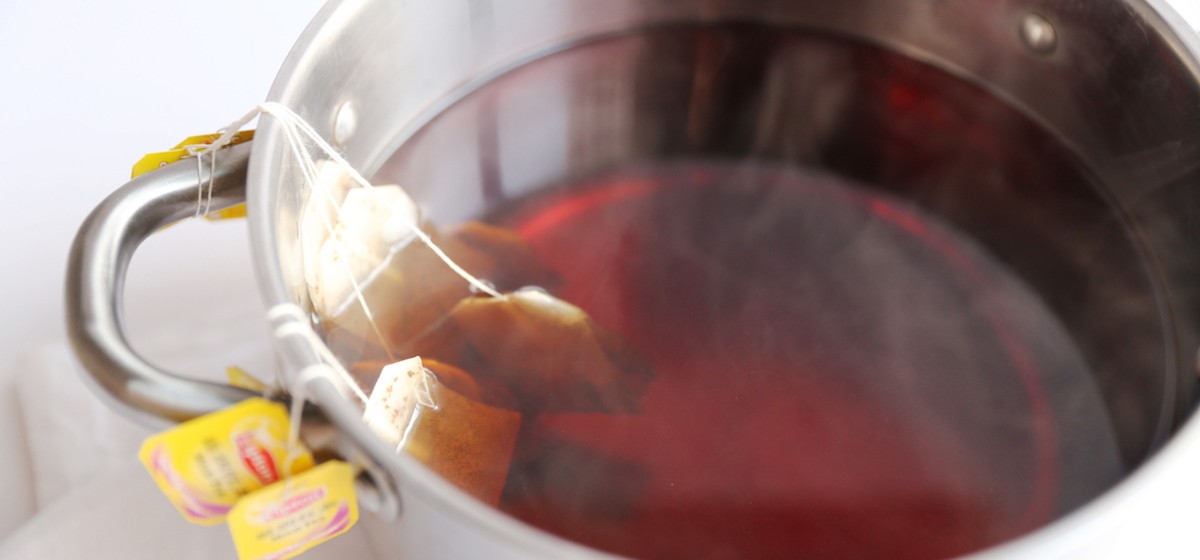
Begin by making your tea base. Boil water and remove from the heat. Add your sugar and stir until it’s completely dissolved. Add the tea bags, and allow the tea to brew until completely cold.
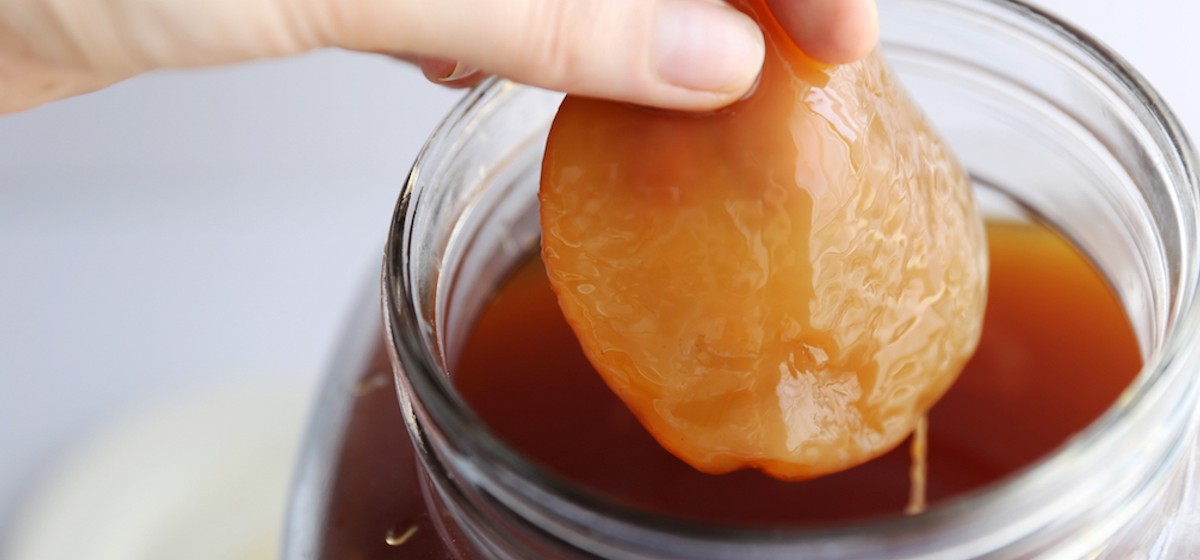
Remove the tea bags and transfer the tea mixture to your glass jar, add the starter tea, and with clean hands, gently slide in the scoby. Cover the mouth of the jar with a breathable piece of cloth and secure with rubber bands.
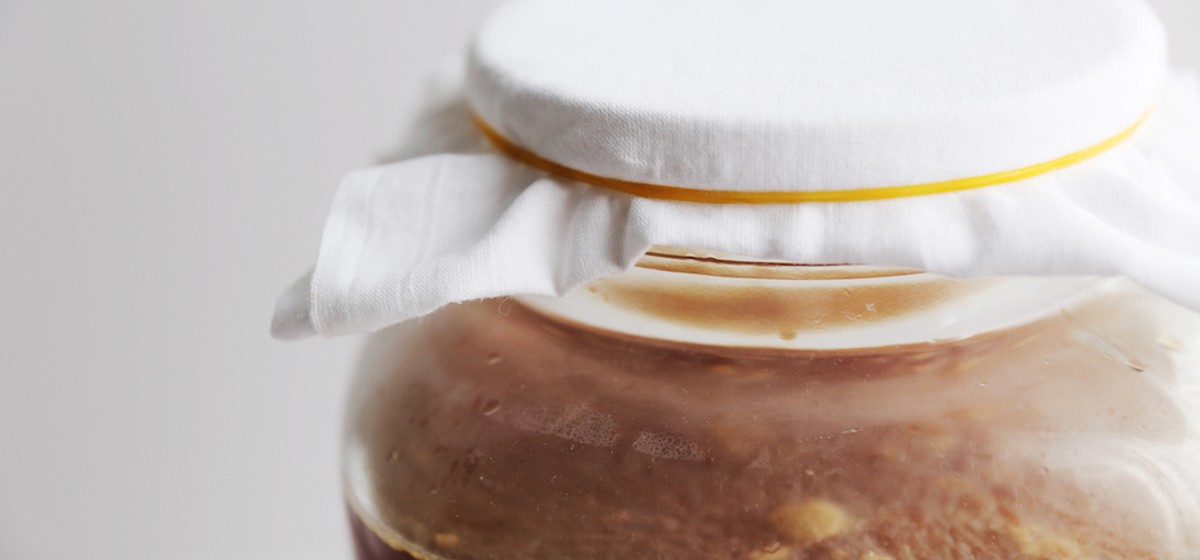
Ferment for 7-10 days, checking on it daily. You should see a new scoby beginning to develop on the surface of the tea. After 7 days you should begin tasting your kombucha, and when the taste has developed a good balance between tartness and sweetness, it’ll be ready for you to bottle. The longer you leave the kombucha to ferment, the more tart it will be. Be careful not to leave it for too long, otherwise you'll end up with kombucha vinegar (not ideal for drinking but great in salad dressings!)
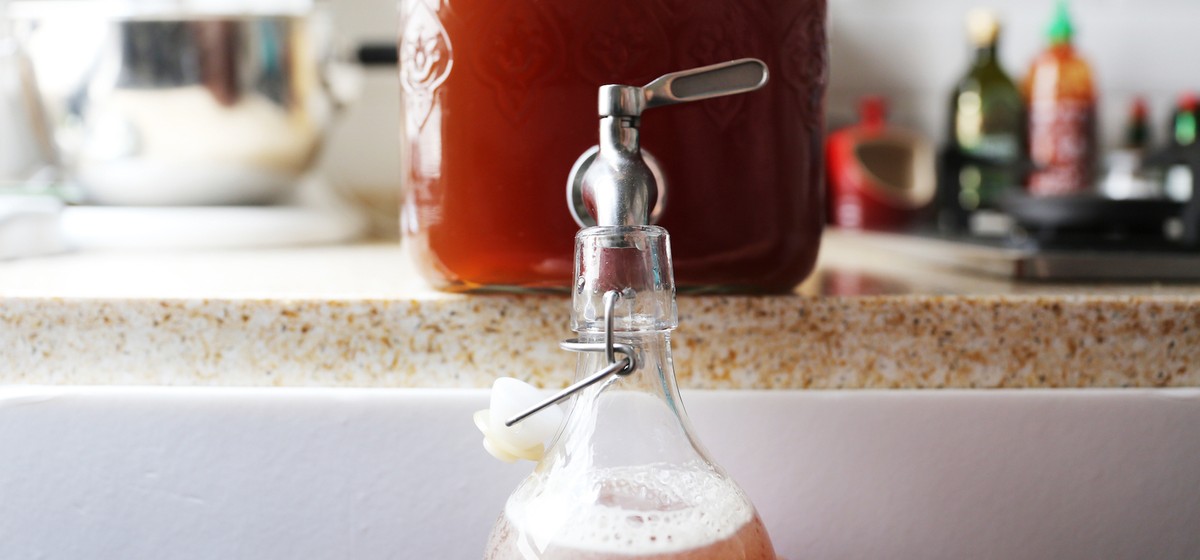
With clean hands, gently remove the scoby and place on a clean ceramic plate. Reserve 2 cups of kombuchs and set aside along with the scoby for your next batch. Divide kombucha into glass swing-top bottles (the kind that close tightly). This is where you need to add any flavorings, like blueberries, pineapple juice, ginger and fresh herbs. You'll also need to leave about half an inch (around 12 cm) space at the top of the bottle to allow for any bubbles that might develop.
You’ll then need to seal your bottles and leave to second-ferment and carbonate for 1-3 days, out of direct sunlight and at room temperature. Refrigerate to stop fermentation and consume within 1 month.
The jar needs to be kept out of direct sunlight and stored at room temperature. You also need to make sure it’s in a place that won’t allow for the jar to be disturbed a lot.
Yep, totally fine. You’ll see a new one forming at the top of the tea, which might attach itself to your original scoby.
Also totally fine, and just a sign that you have a healthy, happy scoby that’s busy making you delicious homemade kombucha.